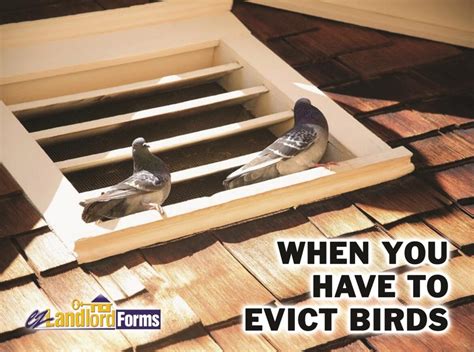The Ultimate Guide to Bird Eviction: Humane and Effective Strategies
Birds, while beautiful and fascinating creatures, can sometimes become unwelcome guests on our properties. Their droppings can damage paint, their nests can clog gutters, and their constant chirping can be disruptive. This guide provides a comprehensive approach to bird eviction, focusing on humane methods that prioritize the safety and well-being of the birds while effectively addressing the problem. Remember, many birds are protected by law, so understanding local regulations is crucial before implementing any eviction strategy.
Why Are Birds Nesting Where They Shouldn't Be?
Before attempting eviction, it's important to understand why birds are choosing your property. Common reasons include:
- Availability of nesting sites: Eaves, ledges, and other structural features offer ideal nesting locations.
- Abundance of food: Nearby gardens, feeders, or garbage attract birds.
- Lack of natural predators: Urban environments can offer birds a degree of safety from predators.
Addressing these underlying factors can significantly reduce the likelihood of future bird infestations.
Humane Bird Deterrents: A Multi-pronged Approach
Evicting birds humanely requires a multi-pronged approach, combining several deterrents to achieve the most effective results. Avoid using harmful methods like poisons or trapping.
1. Visual Deterrents: Making Your Property Less Appealing
- Shiny objects: Hanging reflective tape, Mylar balloons, or CDs can scare birds away with their movement and glare. These need to be repositioned regularly to maintain their effectiveness.
- Predatory decoys: Placing realistic-looking owl or hawk decoys can deter birds, but their effectiveness diminishes over time. Rotate their positions periodically to increase their perceived threat.
- Bird netting: Strategically placed netting can prevent birds from accessing specific areas, such as eaves or vents. Ensure the netting is properly secured to prevent entanglement hazards.
2. Auditory Deterrents: Creating Unpleasant Sounds
- Ultrasonic devices: These emit high-frequency sounds inaudible to humans but reportedly unpleasant to birds. The effectiveness of these devices varies, and some birds may habituate to them over time.
- Distress calls: Playing recordings of bird distress calls can temporarily deter birds, but consistent use is usually ineffective in the long term.
3. Physical Deterrents: Blocking Access to Nesting Sites
- Physical barriers: Installing bird spikes or netting on ledges and other preferred nesting sites prevents birds from landing and building nests.
- Removing nesting materials: Carefully remove any existing nests after the birds have vacated them. Dispose of the nests properly to prevent re-occupation.
What to Do If You Find Injured or Baby Birds?
If you encounter injured or baby birds, avoid handling them directly. Contact a local wildlife rehabilitation center or animal rescue organization. They have the expertise and resources to provide the necessary care.
Addressing Nesting in Chimneys and Other Difficult Locations
Chimney nesting is a significant concern as it can pose a fire hazard. Installing a chimney cap is the most effective solution. For other difficult-to-reach locations, consult a professional pest control company specializing in bird removal for safe and effective solutions.
What if Birds Keep Returning?
Persistence is key. If birds keep returning, you may need to reassess your chosen deterrents or implement a combination of strategies. Regularly inspect and maintain your deterrents to ensure their effectiveness. Sometimes, a professional assessment is needed to identify the root cause and develop a tailored solution.
Frequently Asked Questions (FAQ)
How do I humanely remove a bird's nest?
Never remove a nest while birds are actively using it. Wait until the young have fledged, then carefully remove the nest and dispose of it properly.
Are bird spikes cruel?
Bird spikes, when properly installed, are generally considered a humane deterrent because they prevent birds from landing rather than harming them directly. However, ensure they are not placed where birds could become entangled.
What is the best way to deter birds from my garden?
A multi-pronged approach combining visual and auditory deterrents, along with removing food sources, is often the most effective method.
Can I use netting to keep birds away from my property?
Yes, netting can be effective, but it must be installed correctly to prevent birds from becoming entangled. Choose netting with appropriate mesh size for the bird species you are trying to deter.
When is the best time of year to deter birds?
The best time to deter birds is before they begin nesting, typically in the spring. However, deterrents can be used throughout the year to prevent birds from settling in unwanted areas.
This comprehensive guide outlines humane and effective methods for bird eviction. Remember always to prioritize the well-being of the birds while addressing your concerns. If you are unsure about any method, consulting a wildlife professional is always advisable.

